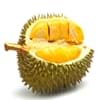Health Benefits
Cancer prevention, Diarrhea treatment, Muscle pain relief, Piles treatment, Prevents constipation, Skin cleansing, Ulcer treatment
Arthritis prevention, Asthma treatment, Cancer prevention, Kidney stone treatment, Liver health
General Benefits
Controls blood pressure, Digestive aid, Maintains healthy cholesterol level, Strengthens bones
Anti oxidant properties, Boosts immune system, Cures cough, Eye care, Fights against infections, Helps in weight loss, Improves eye vision, Maintains healthy cholesterol level, Treatment of common cold
Skin Benefits
Anti-aging benefits, Hydrates skin, Skin rejuvenation
Anti-aging benefits, Brightens and lightens complexion, Reduces wrinkles, Treatment of dark spots
Hair Benefits
Prevents hair loss, Shiny hair, Softening mask
Prevents hair loss, Protects hair, Regulates hair growth, Treatment of dandruff
Allergy Symptoms
Abdominal pains, Decrease in blood pressure, Dizziness, Hives, Itching of mouth, Lightheadedness, Swelling, Swelling of mouth, tongue or lips, Weak or racing pulse, Wheezing
Abdominal pains, Breathing difficulty, Decrease in blood pressure, Diarrhea, Dizziness, Eczema, Hives, Lightheadedness, Nausea, Runny nose, Sneezing, Swelling of mouth, tongue or lips, Vomiting, Wheezing
Side Effects
Headache, Intense headache, Tooth decay
Allergic reaction
Best Time to Eat
As a snack in the late afternoon, Don't consume at night and before bed, Eat the fresh ones, avoid mixing with any other foods, don't eat after meal.
As a snack in the late afternoon, Eat the fresh ones, avoid mixing with any other foods, don't eat after meal., Morning time (before lunch), Strictly avoid empty stomach
Vitamin B5 (Pantothenic Acid)
Vitamin C (Ascorbic Acid)
Vitamin K (Phyllochinone)
Phytosterol
Not Available
Calories in Fresh Fruit with Peel
Not Available
Calories in Fresh Fruit without Peel
Calories in Frozen Form
Not Available
Type
Berry, Tropical
Citrus, Tree fruit
Season
All seasons
All seasons
Varieties
Cavendish Bananas, Lady Finger Bananas, Pisang Raja, Williams Bananas and Cooking Bananas
Duncan, Marsh and Oro Blanco
Color
Green, Yellow
White
Inside Color
White
Creamy Yellow
Shape
Curving Cylinder
Round
Origin
Papua New Guinea
Barbados
Soil Type
Well-drained
Loam, Well-drained
Climatic Conditions
Warm
Humid, Warm
Facts about
- As bananas contain potassium-40 which is radioactive isotope of potassium, bananas are radioactive.
- Bananas float in water.
- There are around 1000 varieties of bananas.
- Eating this fruit will cheer you up.
- February is known as National Grapefruit Month.
- It is called as state fruit of texas.
- No mechanical devices are used while picking grapefruits, they are always handpicked.
Other Countries
Brazil, Cameroon, China, Colombia, Ecuador, Ghana, Indonesia, Philippines, Uganda
Argentina, India, Israel, Mexico, South Africa, Sudan, Thailand, Turkey, United States of America
Top Importer
Europe
Europe
Top Exporter
Ecuador
United States of America
Botanical Name
Musa acuminata and Musa balbisiana
Citrus paradisi
Synonym
Musa × dacca , Musa × sapidisiaca , Musa × sapientum
Not Available
Subkingdom
Tracheobionta
Tracheobionta
Division
Magnoliophyta
Magnoliophyta
Class
Liliopsida
Magnoliopsida
Subclass
Liliidae
Rosidae
Order
Zingiberales
Sapindales
Species
M. acuminata , M. balbisiana
C. × paradisi
Generic Group
Banana
Citrus fruit
Difference Between Banana and White Grapefruit
We might think that Banana and White Grapefruit are similar with respect to nutritional value and health benefits. But the nutrient content of both fruits is different. Banana and White Grapefruit Facts such as their taste, shape, color, and size are also distinct. The difference between Banana and White Grapefruit is explained here.
The amount of calories in 100 gm of fresh Banana and White Grapefruit with peel is 95.29 kcal and Not Available and the amount of calories without peel is 89.00 kcal and 33.00 kcal respectively. Thus, Banana and White Grapefruit belong to High Calorie Fruits and Low Calorie Fruits category.These fruits might or might not differ with respect to their scientific classification. The order of Banana and White Grapefruit is Zingiberales and Sapindales respectively. Banana belongs to Musaceae family and White Grapefruit belongs to Rutaceae family. Banana belongs to Musa genus of M. acuminata , M. balbisiana species and White Grapefruit belongs to Citrus genus of C. × paradisi species. Beings plants, both fruits belong to Plantae Kingdom.









